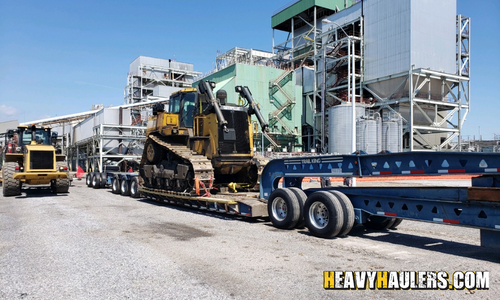One thing that every industry can benefit from is standardization, and logistics is no exception. That’s where freight class comes into play—it serves as a standardized metric to categorize goods based on factors like weight, density, value, and ease of transport. Defined within the National Motor Freight Classification (NMFC) system, it assigns shipments to one of 18 classes, influencing the cost and logistical considerations of transport.
Updated March 2024
It is important to accurately determine the freight class of any shipment since it directly impacts shipping costs—as well as the efficiency of your logistics operations. Misclassification can lead to increased expenses and shipping delays, which is why meticulous measurement and assessment of cargo is so crucial.
Understanding and accurately applying freight class ensures that businesses can forecast shipping expenses and optimize their supply chain management. In essence, freight class is a fundamental aspect of freight shipping, essential for both cost-effective and efficient logistics planning.
As mentioned, freight class is a standardized classification system within the freight industry that is used to categorize cargo to determine shipping costs. This system facilitates a mutual understanding between shippers and carriers regarding the type of goods being transported. The classification is based on the NMFC system, which assigns goods to one of 18 classes, ranging from 50 to 500.
Goods are classified based on four primary factors: weight, density, value, and ease of transport. Weight and density are important because they measure the mass of an item relative to its volume, with denser items falling into a lower (and cheaper) class. However, the value of the goods also plays an important role, as items with higher monetary worth can impact the freight class due to the potential for increased insurance costs. The ease of transport factor considers how straightforward it is to handle, stow, and ship the cargo. Items that are fragile or require special handling are typically classified to a higher freight class based on the additional care and risks involved in their transportation.
Freight classification directly impacts shipping costs and operational efficiency, so it is important to accurately determine the class of all shipments. After all, the freight class determines the rate charged by carriers, with each class reflecting the cost to transport goods based on certain factors. Accurate classification ensures that your business pays the correct rate for your shipments and avoids overcharges or unexpected fees.
Incorrect classification can lead to significant financial and operational losses. If a shipment is classified too low, it can result in underpayment and subsequent billing adjustments. This means increased expenses and administrative burdens as the discrepancy is resolved. On the other hand, over-classification can cause you to overpay for shipping, unnecessarily inflating your logistics costs.
Another thing to consider is that discrepancies in freight classification can trigger additional inspections and audits by carriers, which often leads to shipping delays and disruptions to regular operations. These delays can affect the entire supply chain and impact delivery schedules, customer satisfaction, and even business reputation. In severe cases, frequent misclassification can cause strained relationships with carriers, potentially affecting negotiated rates and terms.
Ultimately, accurate freight classification is not just a regulatory compliance issue but a critical component of cost control and operational efficiency in logistics. It enables businesses to forecast shipping expenses accurately and maintain good carrier relationships, as well as ensure timely delivery of goods.


The NMFC system was developed by the National Motor Freight Traffic Association, or NMFTA, to assign different goods to categories based on their transportability. Here is an overview of the 18 freight classes, their characteristics, and examples of items in each category.
| Class | Description | Examples |
|---|---|---|
| Class 50 | Low freight cost, very dense and heavy items (over 50 pounds per cubic foot) | Bricks, cement, hardwood flooring |
| Class 55 | Heavy items that are slightly less dense (35 to 50 pounds per cubic foot) | Building materials, plaster, metal sheets |
| Class 60 | Dense items (30 to 35 pounds per cubic foot) | Car accessories, engine parts |
| Class 65 | Items with moderate density (22.5 to 30 pounds per cubic foot) | Bottled beverages, books in boxes |
| Class 70 | Items with lower density (15 to 22.5 pounds per cubic foot) | Car engines, food items |
| Class 77.5 | Lighter, bulkier items (13.5 to 15 pounds per cubic foot) | Tires, bathroom fixtures |
| Class 85 | Bulky, lighter items (12 to 13.5 pounds per cubic foot) | Furniture, home appliances |
| Class 92.5 | Large, lightweight items (10.5 to 12 pounds per cubic foot) | Assembled bicycles, kayaks, computers |
| Class 100 | Light, bulky items (9 to 10.5 pounds per cubic foot) | Boat covers, car covers, wine cases |
| Class 110 | Very light, very bulky items (8 to 9 pounds per cubic foot) | Cabinets, framed artwork |
| Class 125 | Items with low density (7 to 8 pounds per cubic foot) | Small household appliances, lighting fixtures |
| Class 150 | Very light items (6 to 7 pounds per cubic foot) | Upholstered furniture, table saws |
| Class 175 | Lightweight, bulky items (5 to 6 pounds per cubic foot) | Clothing, couches |
| Class 200 | Light and very bulky items (4 to 5 pounds per cubic foot) | Aluminum siding, mattress and box spring sets |
| Class 250 | Extremely light and bulky items (3 to 4 pounds per cubic foot) | Bamboo furniture, mattress toppers, plasma TV |
| Class 300 | Very light and extremely bulky items (2 to 3 pounds per cubic foot) | Wood cabinets, chairs, model boats |
| Class 400 | Lightweight, very bulky items (1 to 2 pounds per cubic foot) | Fragile goods, inflatable toys |
| Class 500 | Lowest density and highest freight cost, extremely light and bulky (less than 1 pound per cubic foot) | Ping pong balls, bags of gold dust |
These classes are used to determine the needs and risks associated with transporting all kinds of goods, which is why they are so important for determining costs and logistics planning.
A freight class chart is a reference tool used in the logistics and shipping industry to categorize various types of items into specific classes. The chart lists the 18 freight classes with corresponding descriptions of goods, weight, density, and other factors like stowability and liability.
To determine the appropriate freight class using this chart, shippers need to evaluate their cargo based on these criteria. That means measuring the item’s weight, calculating its density (the total weight divided by its cubic volume), and assessing its susceptibility to damage. By cross-referencing these characteristics with the chart, shippers can identify the class that best fits their cargo’s profile.
Calculating the freight class of a shipment is a detailed process that involves several steps, each of which is essential for ensuring accuracy. Here’s what you need to know:
1. Measure the shipment. This includes the height, width, and length of the shipment in inches. You should also include packaging and palletizing in these measurements to get the total size of the cargo.
2. Weigh the shipment. Determine the total weight of the shipment, including packaging and pallets, in pounds. Use a certified scale to ensure accuracy.
3. Calculate the density. Divide the total weight by the total cubic volume (which you find by multiplying the height, width, and length). The result is the shipment’s density in pounds per cubic foot.
4. Evaluate additional factors. The next step is assessing how easily the freight can be stowed, the risk of damage, and its value. These factors can influence the freight classification, so don’t skip this step.
5. Refer to a freight class chart. Using the calculated density and considering factors like stowability and liability, refer to a freight class chart to find the appropriate class. These charts align the density ranges and other factors with specific freight classes, making it easier to correctly classify your shipment.
A freight class calculator can simplify the process of determining the appropriate class for shipping purposes. It helps shippers and logistics professionals quickly identify the correct classification for their cargo, ensuring accurate costs and compliance with carrier requirements.
The calculator is a valuable tool since it automatically computes the density of the shipment based on the input dimensions and weight. This eliminates manual calculation errors and provides a quick assessment of the cargo’s density. It also offers instant results. Once you enter the shipment details, the calculator instantly suggests the appropriate freight class, which helps streamline the decision-making process for shipping logistics.
The best part? Using a freight class calculator is a breeze. Simply gather the shipment details, enter the information into the calculator, analyze the results, and then verify and apply the suggested class. This helps shippers avoid common mistakes in classification and reduces the risk of reclassification fees. Anyone looking to optimize their logistics operations and control shipping costs can benefit from this tool.
Understanding and accurately determining freight class is essential for efficient—and cost-effective—shipping. By carefully categorizing goods for transport, you can keep shipping costs predictable and manageable.
Avoid disruptions to your supply chain and reduce the likelihood of errors with the help of tools like a freight class chart and a freight class calculator. Leveraging resources like those provided by Heavy Haulers can help shippers enhance their logistics management for smooth shipping operations.


>Each month, Heavy Haulers features a transport by a standout agent. Featured transports spotlight the best transport and logistics agent of the month.
Heavy Haulers offer trustworthy and reliable transportation services for all varieties of freight including shipments of individual, commercial, and heavy machinery.
Our trained logistics professionals make sure your load arrives on time, and in the same shape in which it departed. See recent customers who’ve shared their move with us!
For transparent pricing and superior customer service on oversized equipment transportation, call Heavy Haulers today!
Throughout the years, Heavy Haulers has proven its unwavering commitment to quality, safety, and client satisfaction through the multiple awards and affiliations we've earned. When you partner with Heavy Haulers, you partner with trusted leaders in the transport industry.





